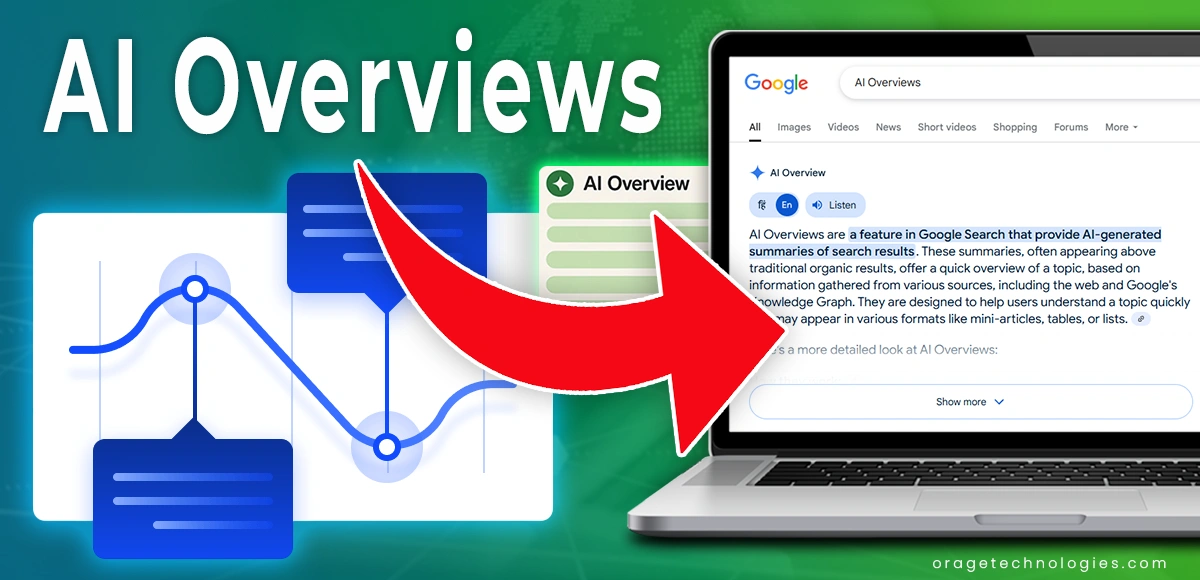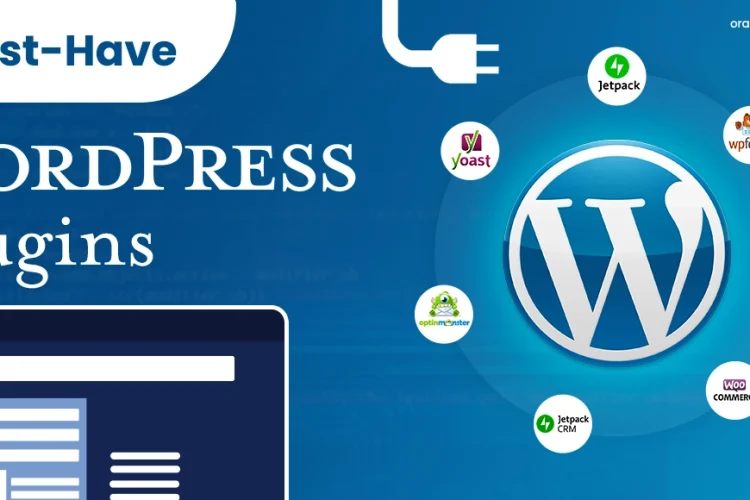
Divya Stuti, with over 5 years of experience in Digital Marketing & Content Writing, has a knack for turning complex Marketing strategies, trends, and jargon...
AI Overviews, often shortened as AIOs, are a new feature introduced by Google to reshape how users receive information from search results. Instead of listing several websites for users to explore, Google now presents a summarized answer right at the top of the search results page. This answer is generated using artificial intelligence and is often built from content taken from different websites across the internet.
AIOs are not just simple text boxes. They are dynamic, AI-driven summaries that aim to provide quick and relevant responses to user queries, especially for complex or multi-step questions. For example, if someone searches for “How to lower blood pressure naturally,” they may now see a summary outlining several natural methods, such as diet changes, exercise, and stress reduction, all compiled into one brief, clear overview at the top of the page.
These summaries usually come up in position zero, before the paid advertisements and the classic organic search listings. They can also include quotes or links to the websites that were used to assist in creating the summary. This presents users with an option, they may either opt to read the entire article of the attributed source or they may have the foggy outline of the answer in a jiffy without leaving the search results page.
How Do AIOs Change the Search Experience?
AI Overviews are transforming the manner of engaging search outcomes. Previously, users had to access various links in order to get answers. But now they get summarised answers at the top of the page without clicking on any link.
This has brought a new search behaviour. We have found that many users now read the AI Overview and ignore the top ranking blogs. They do not scroll down to view the normal web listings. This has led to a reduction in the number of visits to websites that previously enjoyed constant visits.
The other major transformation is the rate of retrieval of information. AIOs draw together key points from various different sources. This assists users in obtaining what they require within a very short period of time. And cuts down the necessity to access complete articles.
For example, the user who types in “best running shoes for flat feet” could receive a list of all of them, and purchase suggestions, in the AIO. They might not find it necessary to read reviews or professional blogs.
Another impact of AIOs is related to the way individuals trust search results. When Google gives us the information in a single summarized box, it gives the feeling that there is no other answer. Users often have more faith in the summary than they do in individual websites, even when the summary is syndicated to those very sites.
Impact on Organic Website Traffic
Artificial intelligence Summaries are experiencing a visible impact on natural site visits. A lot of websites have started receiving reduced clicks through Google search. A page that appears in the top 10 might not receive visits, unless it appears in the AIO.
The recent data highlights that the clicks on many sites have reduced by 23 percent between January and April 2025. This translates to less number of users hitting sites even when they appear on the first page.
A large part of the reason is the fact that users are finding answers to their needs in the AI Overviews. They no longer have to click through to get access to entire articles. Due to this, websites are losing traffic, even when their content was used to develop the AIO summary.
The click-through rate (CTR) has also dropped sharply. In just a few months, it fell from 3% to 2.3%, a 32% decline. This means that for every 100 people who see a link, only 2 or 3 click it.
While impressions have gone up, they don’t help much. AIOs assign the same top ranking to all cited sources. This boosts impressions, but those numbers don’t always turn into visits.
If your website is not included in the AIO, the effect is even worse. Users may never scroll down far enough to see your link, and even high-ranking pages get ignored if they’re not in the summary.
Included vs. Excluded Pages
When AI Overviews appear in search results, they don’t treat all top-ranking pages equally. Some pages are included in the AIO. Others, though ranked in the top 10, are left out. This difference has a significant effect on traffic.
Pages included in AIOs often receive more clicks. Being cited in the overview gives them direct visibility at the top of the page. Users see their content right away and are more likely to click on the link if they want more details.
On the other hand, excluded pages see a sharp drop in traffic. Even if they rank on the first page, users may never scroll down to find them. AIOs take up most of the user’s attention, especially when the answer feels complete.
A recent study compared three types of conditions:
- No AIO present: Traditional search results with the page in the top 10.
- AIO present – page included: The page appears in the AIO summary.
- AIO present – page excluded: The page ranks high but is not part of the AIO.
The results showed that pages included in AIOs got the most clicks. Pages in the third group, excluded from AIO, saw a drop in traffic, even if their rank didn’t change. This shows how inclusion in an AIO can now be more important than rank itself.
Different Effects Based on Search Intent
Not all searches are the same. Some people look for quick facts, while others want to compare products or make a purchase. The way AI Overviews affect traffic depends heavily on the user’s goal.
When users search for informational content, like “how to start a blog” or “benefits of yoga,” AIOs often give a complete answer. Users get summaries, lists, and explanations without clicking any links. This leads to fewer visits to content-heavy websites, especially blogs and guides.
However, the impact is a bit different for transactional searches, such as “best budget smartphone under $300” or “buy running shoes online. ” Users may still want to click and explore more before making a decision. In these cases, if your site is featured in the AIO, you’re more likely to get clicks. If not, chances drop significantly.
So, search intent matters. AIOs are more disruptive for informational queries, where users just want knowledge. However, for transactional or decision-based queries, users may still browse beyond the AIO, especially if they want more detail, reviews, or trusted sources.
Still, in both cases, being cited in the AIO is key. Whether users want answers or to make a purchase, showing up in the summary increases your visibility and chances of getting traffic. Understanding this shift helps websites tailor content for different intents and optimize for inclusion in AI Overviews.
How to Optimize for AIO Inclusion
As AI Overviews take over more space on search pages, being part of them is becoming critical. If your site isn’t cited, even a high ranking may not bring traffic. So, how can you improve your chances of being included?
- Write Clear, Factual Content
AI tools look for trustworthy and easy-to-understand information. Use short sentences, clear structure, and avoid fluff. Make your content direct and practical.
- Answer Questions Early
Structure your pages to provide quick answers. Use headings and bullet points to break content into manageable sections. If a user asks a question, your page should offer a fast and reliable answer in the first few lines.
- Use Schema Markup
Schema can improve search engines ability to comprehend your content and increases your likelihood of having rich results. Apply structured data (FAQ, HowTo, Product markup, etc.) whenever their use is appropriate.
- Back Your Claims with Reliable Sources
AI likes the sources referring to credible websites or involving expertise. In order to increase the credibility, include references, statistics and quotes by trustworthy sources.
- Stay on Topic
Do not attempt to stuff too much on a page. Each page should have one topic only. The reason why focused content performs better is due to the fact that it is easier to match focused content to a particular query.
- Build Authority Over Time
Sites that have performed well in terms of providing correct information are more likely to be mentioned in AIO. Be consistent in publishing and make sure that all your publications are valuable. These steps will help you to improve your opportunities to be cited in an AIO. And that, in turn, may save your organic traffic in this new searching environment.
The Rise of Zero-Click Searches
One of the most important impacts of AI Overviews is the emergence of zero-click searches. This is the search result in which users can find the answer on Google without visiting any links. Previously, users would search and view the listing of the results and would visit one or several websites to get additional information. Today, they frequently receive whole answers in the search results thanks to AIO.
This means they don’t need to visit any site. For example, someone searching “benefits of green tea” might see a summary with all the key points. If their question is answered right there, they won’t need to click a link.
Why This Matters
- Less traffic for most websites: Even if your page ranks well, users might not click it.
- Fewer chances to engage readers: No click means no opportunity to build trust or offer more value.
- Harder to track user intent: With fewer visits, it’s harder to know what your audience wants.
How to Respond
The best way to deal with zero-click searches is to aim for inclusion in the AI Overview. If you can’t beat it, try to be part of it. That way, you still appear in front of users, even if they don’t click. Also, consider building more value on your site. Offer tools, downloads, or interactive content that can’t be shown in a short AI answer. That gives users a reason to visit.
Zero-click searches are here to stay. Websites must adjust by focusing on visibility, usefulness, and content that goes beyond basic answers. AIO are changing how people search and how websites get traffic. To stay visible, brands must create explicit, helpful content that answers questions quickly. Getting featured in AIOs is now just as important as ranking high. The future of search is here and the brighter you adapt, the more traffic you’ll keep.
Also Read: Can OpenAI Codex, The AI Coding Agent, Take Over The Jobs of Software Engineers?

Divya Stuti, with over 5 years of experience in Digital Marketing & Content Writing, has a knack for turning complex Marketing strategies, trends, and jargon into interesting and easy to digest blog posts. Whether she’s breaking down the SEO, Social Media or decoding campaigns, Divya knows how to make marketing feel exciting and easy to understand. Armed with a sharp eye for strategy and a storyteller’s instinct, she writes with clarity, creativity, and just the right dose of wit.
More Posts

